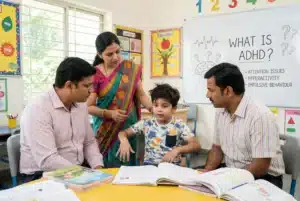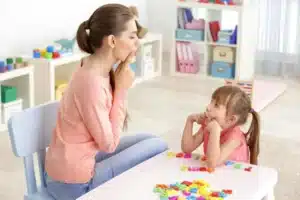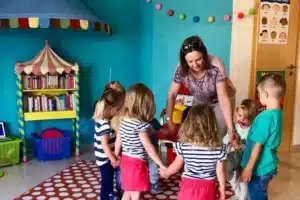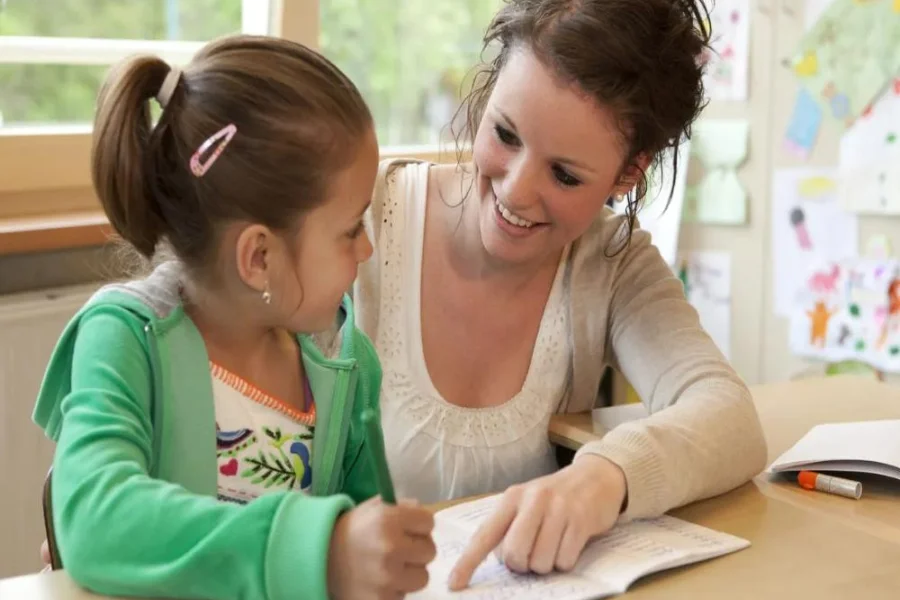
Source: wordunited
Special Education is extremely crucial as it ensures that learners with disabilities receive the appropriate academic support and modified instructions that help them attain high-quality education in a regular mainstream classroom. To Teach Learners with Disabilities it is a must for educators to possess in-depth knowledge of the various learning disabilities, their challenges, and ways to support children for their overall holistic progress.
Teaching learners with disabilities demands resilience, dedication, and a keen desire to positively impact Special children’s lives. It must be noted that Special Children are gifted children with normal intelligence who process information a bit differently from their peers. Therefore, their learning needs should be catered to by implementing strategies such as chunking, which involves breaking down complex processes into easy, manageable steps.
Using multi-sensorial techniques stimulates a child’s senses, which can help them learn concepts clearly. Effective teaching for learners with disabilities also involves fostering social interaction, practicing consistency, and regularly checking for understanding to ensure every student succeeds.
For more details on the LD Course Call/Whatsapp at +919321024137 / +919869866277
To download the brochure of the LD Course, Click Here!
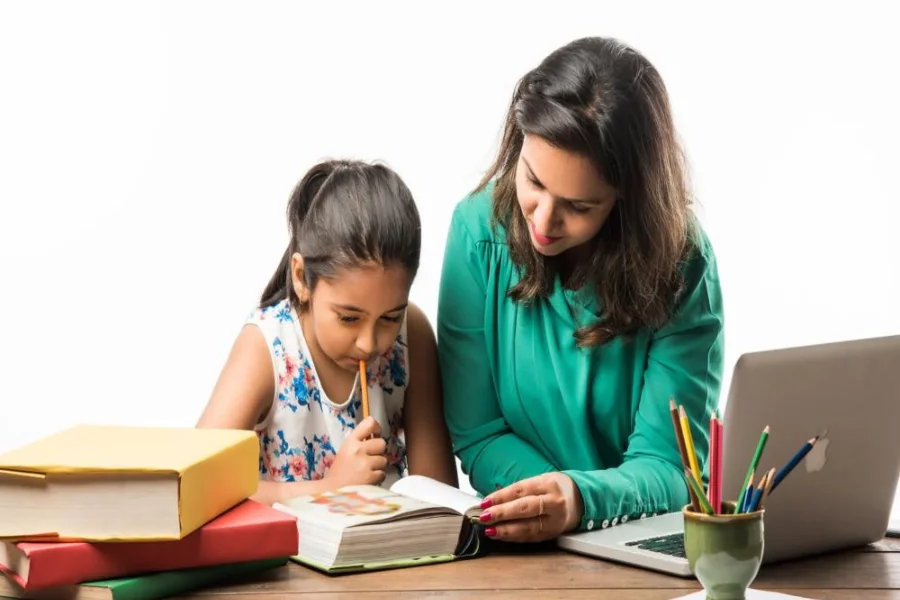
Source: pranavinternationalschool
Tips for Teaching Students with Learning Disabilities
Teaching students with Learning Disabilities needs a meticulous approach that must be designed in a way that aligns with their learning styles and addresses their learning needs effectively. Requires a thoughtful approach tailored to individual needs.
Educators should carefully plan lessons that involves multi-sensorial tactics focusing on the key strengths of the child that ensure that the learning outcomes are achieved successfully.
Below are evidence-based strategies to enhance the learning experience.
Effective Intervention Practices
Direct Instruction
- Teach concepts explicitly and systematically.
- Break lessons into manageable steps to ensure understanding.
Learning Strategy Instruction
- Equip students with techniques to approach learning tasks independently.
- Use structured methods to guide problem-solving and comprehension.
Sequential, Multi-Sensory Approaches
- Combine visual, auditory, and tactile activities to reinforce learning.
- Integrate simultaneous, structured experiences to enhance memory retention.
Best Practices for Teachers
To effectively teach learners with disabilities, teachers should:
Break Learning into Small Steps
Simplify content and present it in stages to ensure mastery of each concept.
Administer Probes
Regularly assess understanding to identify gaps and adjust instruction.
Conduct timely assessments
Conduct periodic reviews and provide precise feedback that can help to address the areas of attention.
Lessons to include multi-modal teaching Aids
Use a variety of teaching aids especially visual aids such as graphics, charts, and pictures that help to hold onto the child’s attention for a longer time.
Encourage Intensive Practice
Design independent exercises to solidify skills.
Model Desired Practices
Demonstrate strategies and processes for students to emulate.
Prompt Strategy Use
Remind students of techniques and approaches during tasks.
The Role of Scaffolding
Scaffolding is an effective approach in which the teacher offers initial assistance which in turn builds the confidence in the child to handle the particular task independently.
- Begin with explicit instruction, where the teacher heavily mediates the learning process.
- Gradually reduce support as students gain confidence and competence.
- Transition to student-mediated instruction, empowering learners to apply skills independently.
Individualized Approach to Learning
For students with learning disabilities, individual progress must take priority over group achievements.
Key elements of an individualized approach include:
- Focused remedial instruction targeting specific areas of need.
- Regular assessment to monitor personal growth and adapt teaching methods.
- Prioritizing individual needs over rigid adherence to the curriculum.
Learners with learning disabilities are individuals who process information differently and when the above strategies are applied it can make a vast difference in their learning journey. The specialised tailored strategies and interventions help children to grasp concepts clearly and uplift their morale giving their confidence a huge boost. Consistent and dedicated efforts to provide special children with structured multi-sensory methods help to lay a strong foundation of learning By implementing these strategies, educators can foster success and resilience in students with learning disabilities, enabling them to reach their full potential. Consistent efforts to teach learners with disabilities through personalized, multi-sensory, and structured approaches create a foundation for lasting academic achievement.
For more details on the LD Course Call/Whatsapp at +919321024137 / +919869866277
To download the brochure of the LD Course, Click Here!

Source: thesun
What are Teaching Strategies for Learners with Learning Disabilities?
As individuals with Learning Disabilities have distinct learning styles teaching strategies for them should be used that focus on their key strengths that make learning joyous and easy for them. Teaching strategies should always be supported with ample hands-on engaging activities that ensure that the child has understood the topics clearly.
Using thoughtfully curated lesson plans can help enhance the learning outcomes for children making them confident learners.
Below are key strategies that educators can employ to teach learners with disabilities effectively.
Key Teaching Strategies
Use Direct and Explicit Instruction
- Break down lessons into small, manageable steps.
- Give them guidance and directions in a simple understandable manner reducing any kind of doubts.
- Focus on Multi-Sensorial Methods
- Use different multi-modal techniques that comprise various sensorial methods that stimulate the learning process facilitating better comprehension.
- Use tools like flashcards, videos, and hands-on activities to reinforce learning.
Provide a Structured Learning Environment
- Maintain a predictable routine to help learners feel secure.
- Use visual schedules and clearly defined objectives to keep students on track.
Encourage Active Participation
- Engage students with interactive activities and group discussions.
- Prompt them to reflect on strategies by asking questions like, “How is this working for you?”
Scaffold Instruction
- Begin with teacher-led, explicit instruction and gradually reduce support as students gain confidence.
- Allow learners to practice skills independently as they progress.
Regular Feedback and Assessment
- Offer constructive, immediate feedback to guide improvement.
- Use formative assessments to monitor individual progress and adjust teaching methods.
Focus on Learning Strategies
- Teach students techniques to approach learning tasks, such as using mnemonic devices or breaking tasks into smaller segments.
- Encourage self-monitoring and organization skills.
Individualized Support
- Tailored instruction is crucial for learners with learning disabilities:
- Design lessons that cater to their unique learning styles and needs.
- Offer additional practice for challenging concepts.
- Create a supportive environment that celebrates small achievements to boost confidence.
To effectively teach learners with disabilities, educators benefit from specialized training. Vidhyanidhi Education Society (Govt. Regd.) offers a Learning Disability Course designed to equip teachers with the skills and strategies to support these students. The course aims to train aspirants and equip them with the desired set of skills that enable them to create a conducive learning environment that can empower children with learning disabilities to achieve better learning outcomes and be able to function independently in a regular mainstream classroom.
Undergoing a Special Ed Needs Course is highly beneficial as it gives them valuable insights into how to foster inclusive classrooms and provide tailored strategies for addressing individual learning differences.
Transform lives with inclusive education! Join Vidhyanidhi Education Society’s LD course today!
For more details on the LD Course Call/Whatsapp at +919321024137 / +919869866277
To download the brochure of the LD Course, Click Here!
FAQs
What is the Key to Success for Students with Learning Disabilities?
Using a tailored strategical approach that suits the child’s learning style is the key to success for special children giving them the exposure to handle situations independently.
What is Scaffolding in Teaching?
Scaffolding in Teaching refers to an approach in which the teacher offers guidance while solving a problem and then lets the child take charge of that situation independently.
How can a Teacher Support a Learner?
Teachers can support learners by providing clear instructions, individualized plans, regular feedback, and fostering a positive, inclusive classroom environment.

